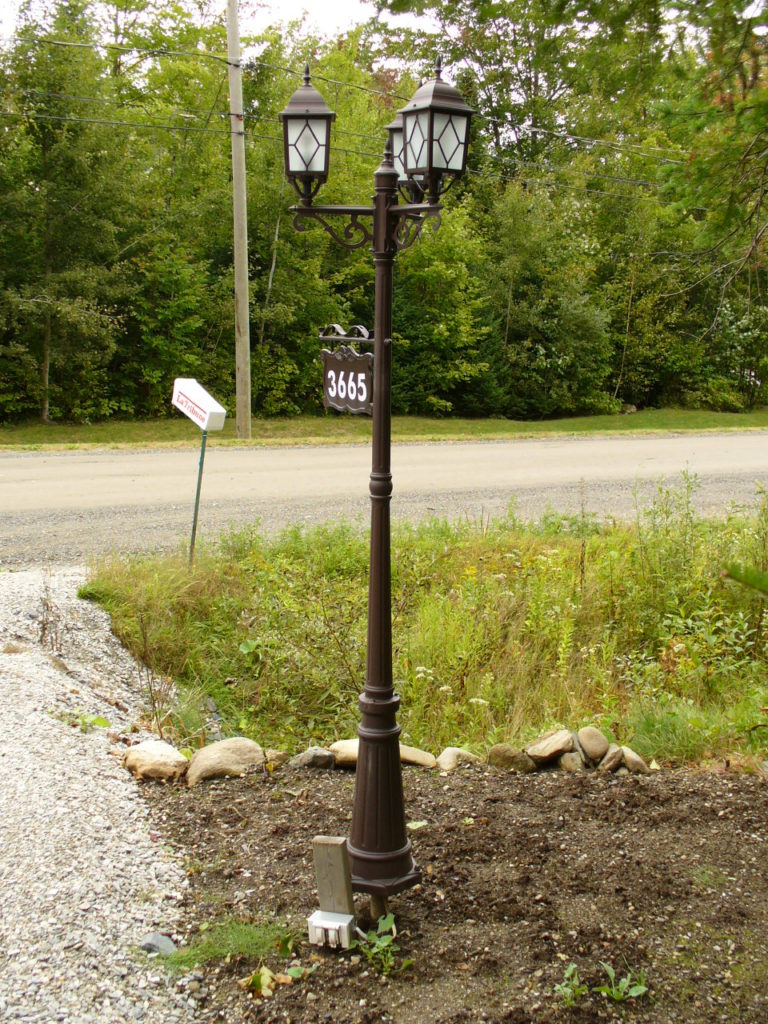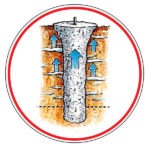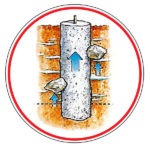The return of warm weather rhymes with BBQs, appetizers and cocktails, and long evenings spent outdoors… And what better way to enjoy summer than a well-equipped deck or terrace! Veritable link between the inside and outside, this living space is an ideal place to relax and socialize. The dimension, shape and build of this outdoor living space can vary considerably according to the adjoining house and the owner’s needs. However, two aspects are key to ensure a solid and durable structure: installation and choice of materials. In this article, we will focus on the second aspect, i.e. foundations and decking materials.
Determine your needs
In order to choose your building materials as well as to determine the structure’s size and style, you must first determine what your specific needs are. Will your deck serve to access an aboveground pool? Will it accommodate a spa? What outdoor furniture are you planning for this space? By answering all of these questions and more, you will be able determine the structure’s size and load-bearing capacity. This, in turn, will allow you to pick the appropriate foundation and decking materials for your project.
What type of foundations for your deck?
Foundations are a key element in ensuring the solidity of your patio, balcony or terrace. In order to be durable, foundations must be impervious to ground movements linked to freeze and thaw cycles. To achieve this, foundations must reach down under the frost line, which varies according to the region and type of soil.
There are currently many options available on the market. Here is a detailed overview of each:
Screw piles
Screw piles are quicker to install and offer much more load‑bearing capacity than Sonotubes. Screw piles are anchored into the ground under the frost line which means that they are impervious to temperature fluctuations. Also, the screw set at the bottom of the pile solidly anchors it down into the ground to prevent any movement.
Contrary to screw piles found in home improvement stores, Pro Post Foundations piles are high‑end engineered products certified by the Canadian Construction Materials Centre (license number 13608-R), and meet the Building Code’s requirements. They are manufactured in a CWB (Canadian Welding Bureau) certified plant in order to guarantee the product’s welding quality.
Our piles are made of galvanized steel to ward off oxidation. They must be installed by a certified installer using specialized machinery. The Kubota tractor used by our installers is equipped with lawn tires rather than tracks in order to avoid damaging your property. The tractor is at ease on all types of terrain, and is equipped with a mini-excavator at the back to allow the installer to remove rocks or obstacles and thus offer a more precise installation.
The number of screw piles to install, their size as well as their positioning will all be determined par the certified installer or by a specialized engineer according to the structure’s size, weight, and the type of soil where the piles will be installed.
Once installed, the screw piles are immediately ready to support the new structure, an incredible time saver!
Be warned that most municipalities now require the use of screw piles for structures connected to a house. To avoid unpleasant surprises, make sure to check with your municipality before opting for any other type of foundation!
All of these facts point out why screw piles are now the construction entrepreneurs’ go to option.
Foundation bolts
Available in big box stores, foundation bolts do not require specialized installation. You must therefore determine the number of bolts required and install them yourself. You must also make sure that they are driven down low enough to be able to resist any ground movement linked to the freeze and thaw cycles. That is when things get complicated…
Indeed, it’s very difficult to install these bolts deep enough manually. You will need the help of an entrepreneur who has the required equipment to do so or hire an excavator. Moreover, such bolts don’t have the load‑bearing capacity to support a deck equipped with a spa or a covered deck.
Concrete blocks
Concrete blocks are an attractive solution since they can be easily installed and do not require excavation work. However, since they are set above the frost line, your deck will be subjected to up and down movements during frost and thaw cycles. Your patio is therefore sure to be damaged over time.
Sonotubes
At first glance, Sonotubes, which are sunk into the ground, might seem like an interesting option… The problem is that they are rarely installed properly (the tube is crooked, debris are present around the tube, the bottom portion of the tube is not perfectly flat, etc.). Also, the concrete used is often not of the right consistence when cast or is cast improperly.
To be effective, Sonotubes must be installed PERFECTLY. Any mistake will result in displacements during frost and thaw cycles that will impact your deck. Moreover, installing Sonotubes is time consuming since the concrete must be allowed sufficient time to cure before the structure can be installed. To find out more about Sonotubes, please read our previous article on this subject.
Here is a summary table of all the foundation options for your deck:
|
Screw piles |
Foundation bolts |
Concrete blocks |
Sonotubes |
| Cost |
Medium |
Low |
Low |
Medium, depending on the type of installation |
| Installation included |
Yes |
No |
No |
DIY or additional $ |
| Risk of movement due to frost and thaw cycles |
Very low |
Low |
High |
Low to high, depending on the quality of excavation and concrete used |
What is the best decking for your deck?
Decks can be clad in several types of materials which all have pros and cons. In order to make the right choice, you must ensure that it is not only esthetically pleasing and in harmony with your home, but also solid and durable. Here is a detailed overview of the various materials currently available on the market.
Wood
Warm, durable and environmentally sound, wood is frequently used for patios and terraces. You can choose from many types of wood: white pine, red cedar, teak, treated lumber, etc., in order to harmonize with your house. Since each type of wood has its advantages and disadvantages, make sure to find out more before making your pick.
Whichever type of wood you choose, however, your deck will require more or less frequent maintenance in order to ensure its durability. A wooden deck can last between 15 and 50 years depending on the wood chosen and how well it is maintained. Most municipalities allow the use of wood for decks.
Composite wood
The use of composite wood is becoming more and more popular for patios. It requires very little maintenance, remains cool when exposed to the sun, and offers a non-slip surface. Composed of a combination of wood fibres and plastic, composite wood is offered in many colours that imitate natural wood.
Composite wood resists humidity, rot and mould. It is therefore a very resistant material which, contrary to natural wood, will not warp nor splint. Say goodbye to splinters! It is however much heavier than wood and quite expensive, and must therefore to be considered as a long term investment.
Fibreglass
Fibreglass is valued for its extreme durability. It is waterproof and requires only a minimum amount of maintenance since it can be easily cleaned with a brush using soap and water. Fibreglass is light, easy to install, and does not require jointing.
Available in a wide variety of colours, fibreglass, however, can become very hot when exposed to the sun. That’s why it is best to opt for a light colour for your patio. In winter, it can become very slippery. It is therefore recommended to sprinkle its surface with salt or sand in order to avoid falls. Unfortunately, fibreglass cannot be recycled which means that the deck must be disposed of in a landfill once its serviceable life is over.
Recycled plastic
Made of new or recycled polyethylene, this material is very durable, resistant to temperature fluctuations, and offered in several colours. A recycled plastic patio, balcony or terrace is maintenance free, but is very slippery when wet and burning hot under the sun. Beware!
PVC membrane
A PVC membrane must be installed over an existing surface. It is waterproof, non-slip and UV resistant. It is also resistant to wear, calcium and chlorine. Offered in several colours and patterns, it can easily match your home’s style.
In conclusion, a patio’s foundations and decking are key elements that require thoughtful consideration. After reading this article, you will certainly agree that Pro Post Foundations piles are a very sturdy foundation option since they are designed to resist ground movement linked to frost and thaw cycles. Moreover, since they are installed by certified professionals using specialized equipment, your peace of mind will be assured.






















